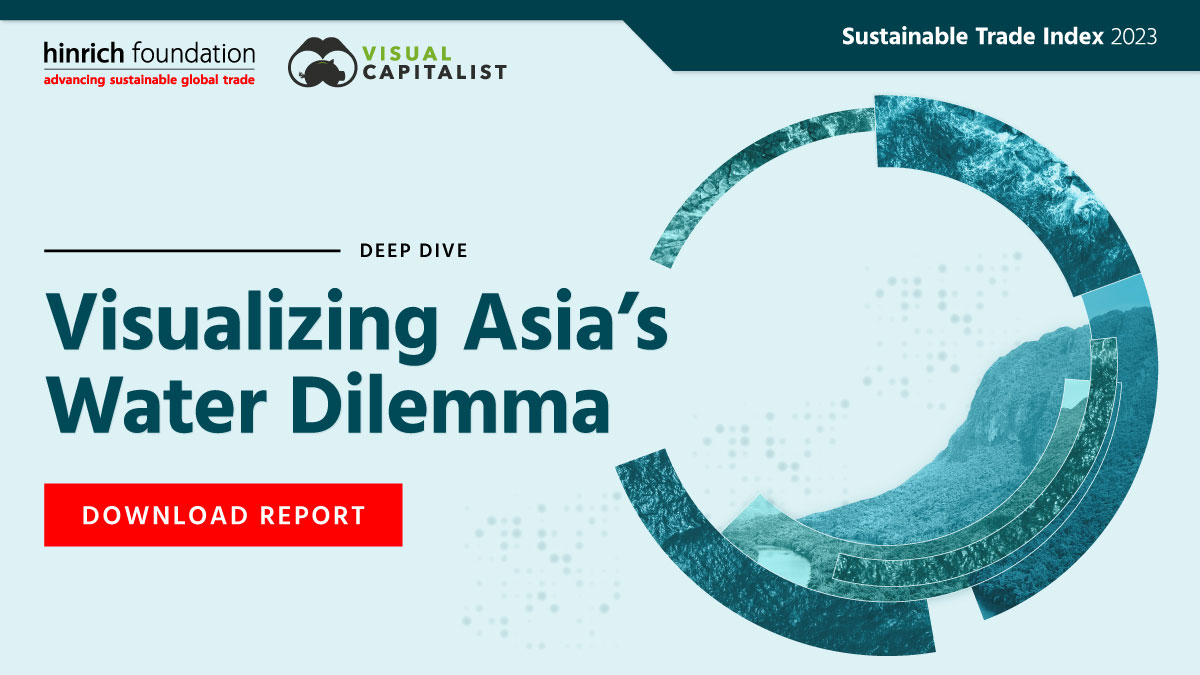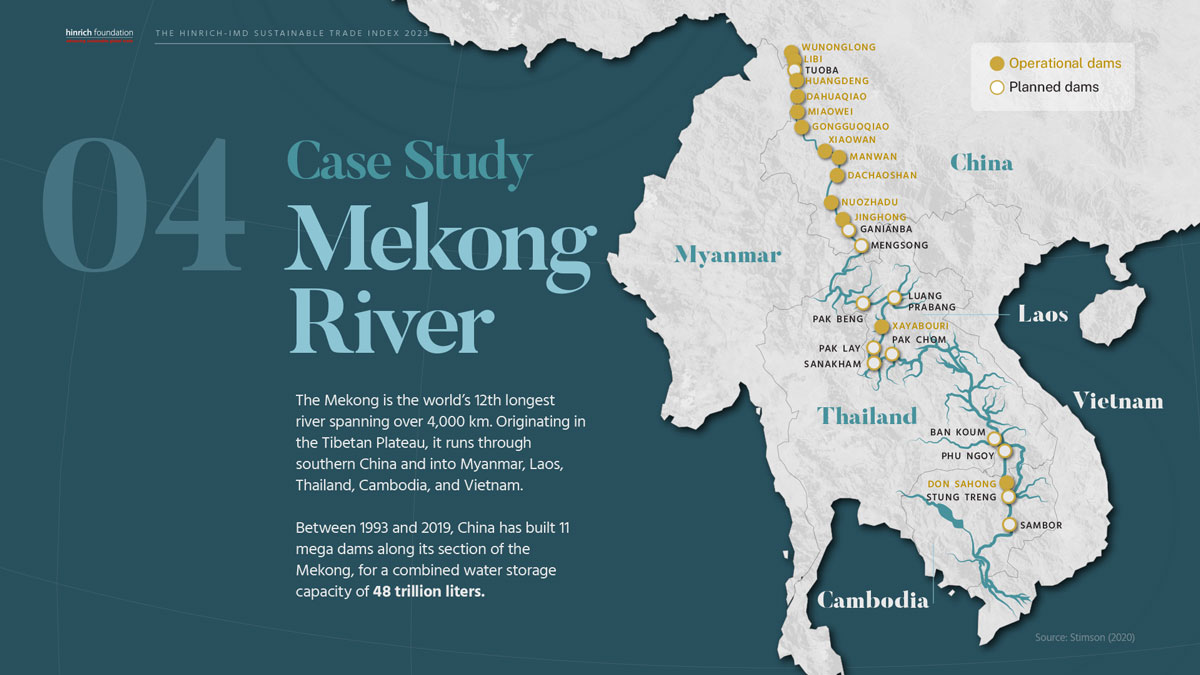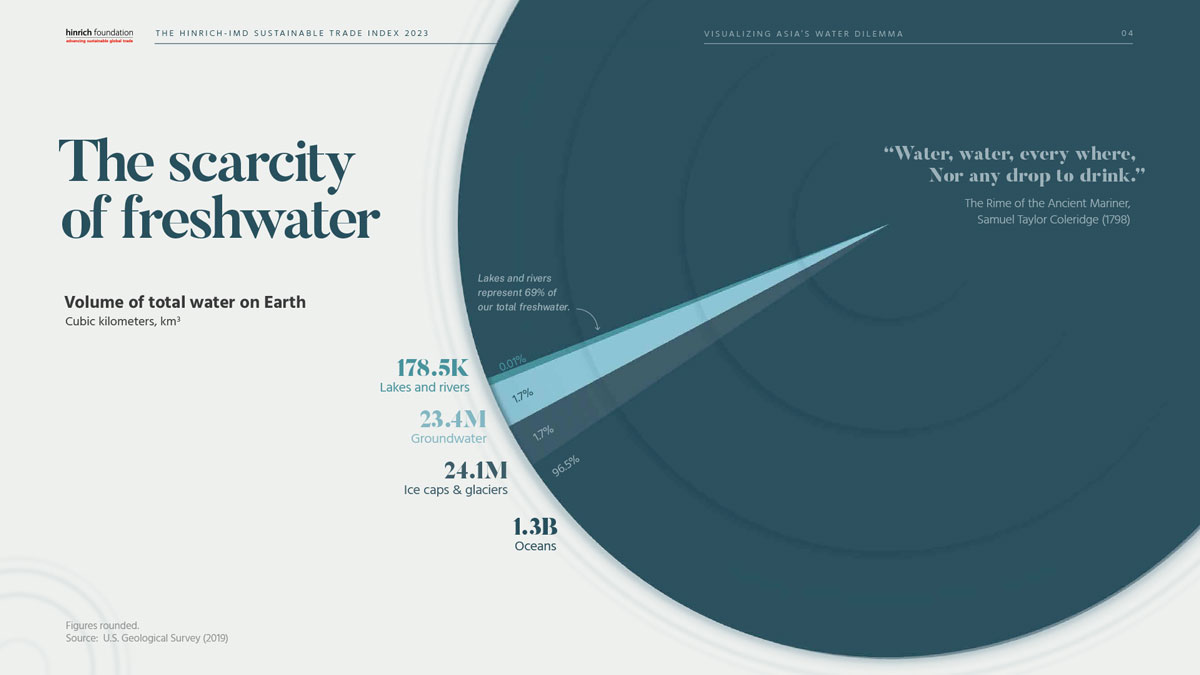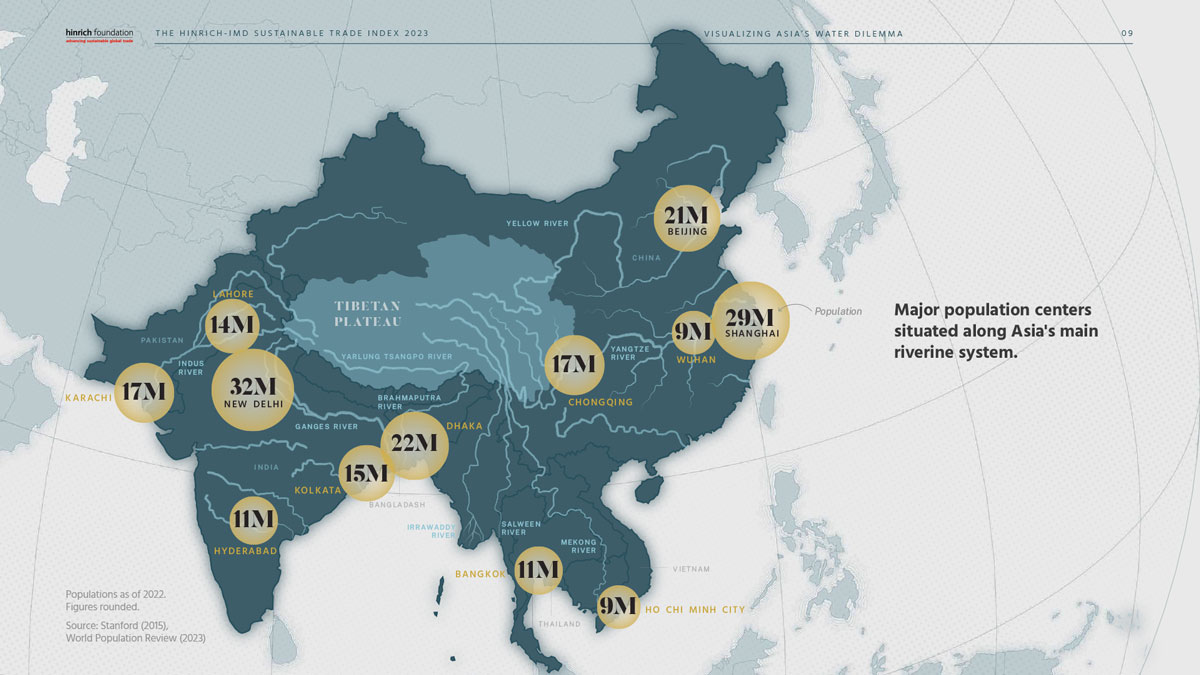Published 05 March 2024
The threat of water scarcity is one of the least profiled of geoeconomic tensions in the world and particularly in Asia, where nations are vying for control over a riverine network that feeds a global race for water-dependent technologies. Visual Capitalist takes a deep dive into the quiet contest over Asia’s water.
(Text by Chuin Wei Yap)
Asia is home to half the world’s population, where many economies depend on a riverine network that originates from Tibetan highlands and flows through the arteries of a global race to build data centers, critical minerals, and other water-dependent components of high-tech manufacturing.
The Egyptian thinker Ismail Serageldin once said that if the wars of last century were fought over oil, those of this century will be fought over water. Nowhere on the planet is this warning more portentous than in the world’s largest continent, where nations are in a race to dam, re-route, and control a riverine network that feeds some of the world’s most parched economies, home to some five billion people and a vast manufacturing complex that is driving climate pressures and geopolitical tensions.
Visual Capitalist and the Hinrich Foundation teamed up for a deep dive into the geoeconomics of waters, part of our series of studies into trade-focused themes highlighted in the Hinrich-IMD Sustainable Trade Index.
More than a third of the world’s nations will face high or extremely high levels of water stress by 2050, the Washington-based think tank World Resources Institute said in a report last year. Among the major regions of the world, Asia has the most people living under water stress by a significant margin, Visual Capitalist’s research found. The risk levels are highest in India, Mongolia, Myanmar, and Central Asia, but scarcity is a reality throughout most of the continent.
Lakes and rivers provide some 70% of freshwater for human consumption, but only 0.01% of usable water resources on Earth. The rest are locked in glaciers or deep in the ground. Oceans account for some 97%, but are seawater is mostly not productive unless treated.
All these mean a rising contest for control over freshwater, one of the least profiled of geostrategic tensions in the world and particularly in Asia. Producing a smartphone requires 12,760 liters of water. A pair of leather boots requires double that amount. Even a T-shirt costs nearly 4,000 liters of water each, about half the volume carried on a firefighter truck.
The politics of Asia’s water dilemma becomes clearer when this contest is framed against the landscape. Most of Asia’s riverine systems originate within the China-controlled Tibetan plateau, feeding major population centers from peninsular Southeast Asia to the Indian sub-continent.
A race is on among economies in the region to dam and control these flows. This warps the natural balance in the environment, flood controls, and renewable energy needs. Along the Mekong, Asia’s third-longest river, China has built 11 mega-dams. Since the first of these dams began construction, eight major droughts have occurred downstream, crippling rice producers in Thailand, Laos, Cambodia, and Vietnam.
Along the Brahmaputra, which crosses into India, China has built 20 massive dams upstream from India. River flows and droughts have become more erratic, but it hasn’t stopped a race between Beijing and New Delhi to see who can dam the Brahmaputra more and faster.
As global trade increasingly turns on technology, the demand for water will mean ever greater tensions. Dr. Serageldin’s warning, made 30 years ago, is already becoming a reality.
© The Hinrich Foundation. See our website Terms and conditions for our copyright and reprint policy. All statements of fact and the views, conclusions and recommendations expressed in this publication are the sole responsibility of the author(s).









